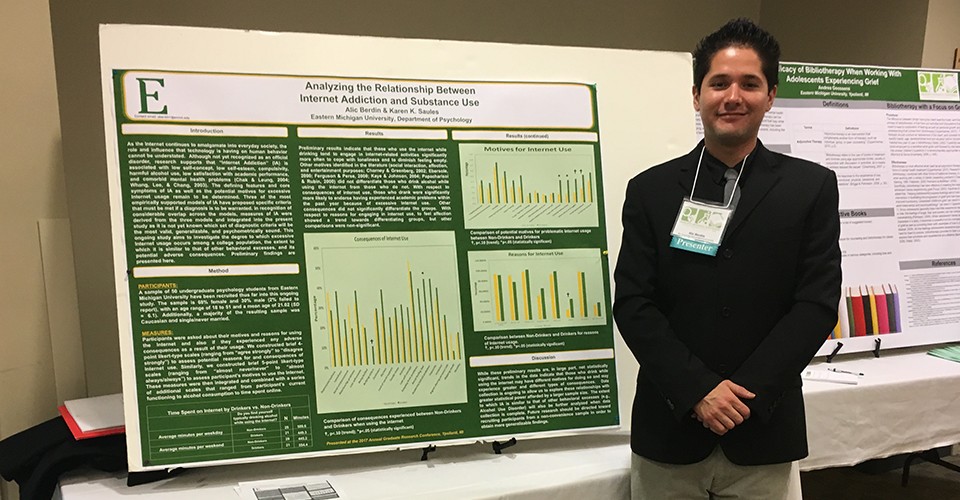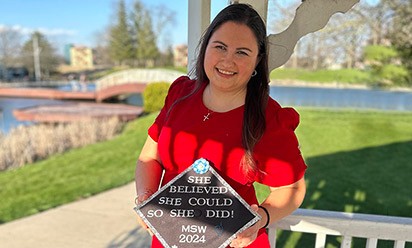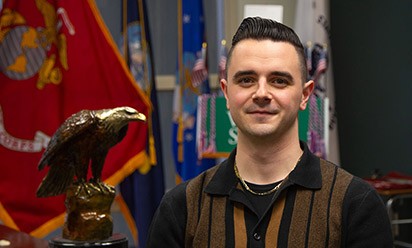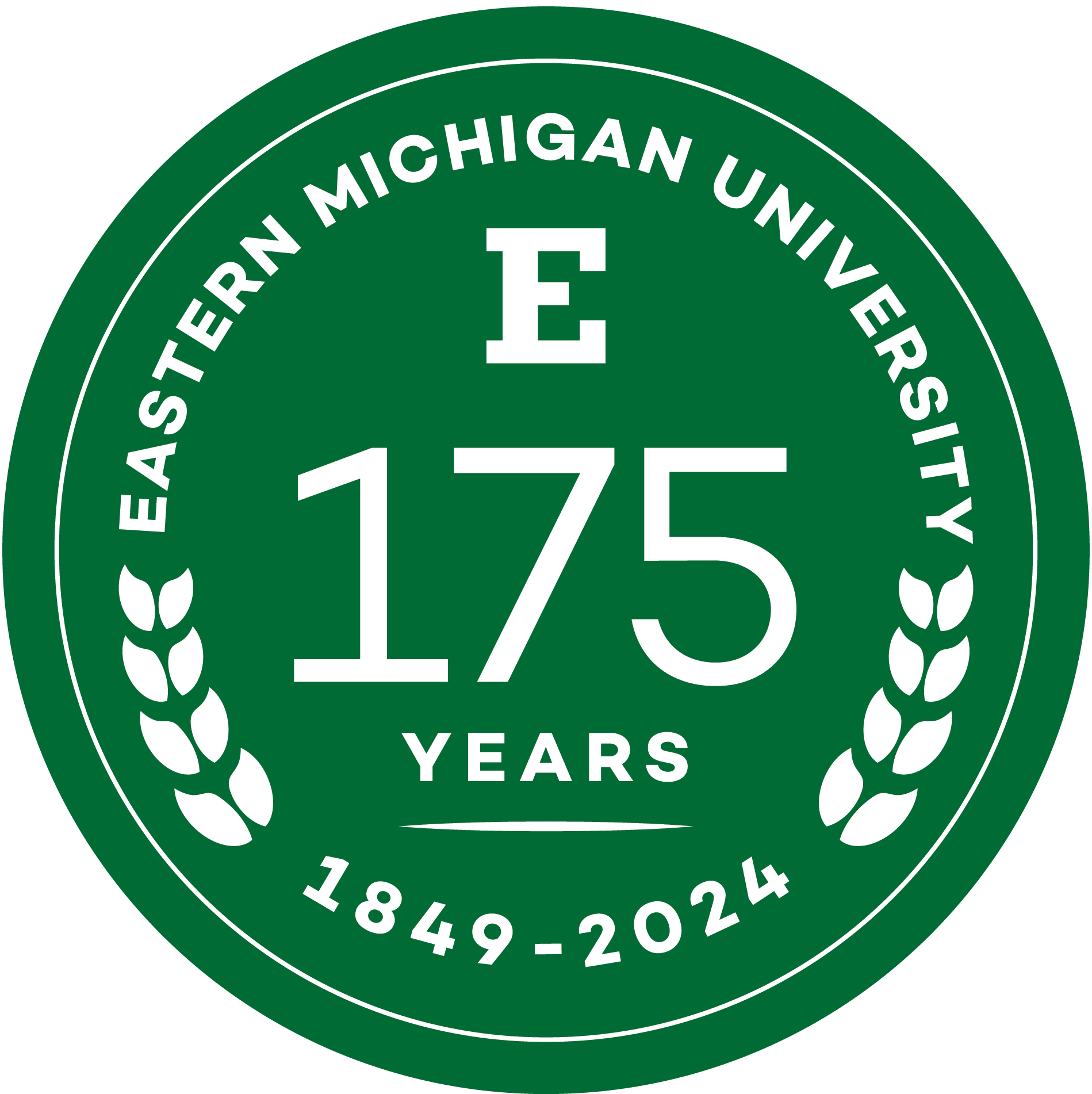[CANCELED] A sampling of the Eastern Michigan University student projects to be presented at the annual Graduate Research Conference on March 20 at the Student Center
Topics include teaching climate change, local segregation patterns and lead’s effect on robins

YPSILANTI – Teaching climate change in the future. Helping cool off someone wearing a spinal orthosis. The effects of lead on songbirds such as robins. A universal primer for cars. Racial segregation patterns in Ann Arbor and Ypsilanti.
Those are just a few of the topics to be presented at the Graduate Research Conference, to be held at the Eastern Michigan University Student Center on Friday, March 20. The event is free and open to the public.
The Graduate Research Conference (GRC) invites Eastern graduate students of all disciplines, colleges and degree designations (masters and doctoral) to participate in a celebration of student research and creative activity in a professional conference format.
There will be about 160 students presenting this year through poster presentations, oral presentations, or Arts Front. There will also be a three-minute thesis competition, where doctoral and Master's students are challenged to describe their research within three minutes to a general audience. The winner is awarded $500.
Shawn Mason, Director of Research & Outcomes for Johnson & Johnson Health and Wellness Solutions, will serve at the keynote speaker at the event’s annual luncheon.
A sample of students, their academic programs and projects:
Mary Bautista (Chemistry): “Bringing Climate Change Instruction into K-12 Education: Implementation Ideas from Pre-Service Science Teachers"
The project involves individual interviews with pre-service science teachers at EMU who are enrolled in a Nature of Science course. The goal: To better understand their definitions of climate change, their perceptions of its global and personal impacts, and their plans to incorporate climate change instruction into their own classrooms. The presentation will focus on how these future educators view their responsibility to teach environmental topics and what lessons or activities they hope to implement with their own students.
Jaime Purdie, Samuel Bryne, Remus Neagu (Orthotics and Prosthetics): "Alternative Bracing Materials for Thermal Management in Total Contact TLSOs (back braces).”
Can prosthetic patients be made more comfortable and less prone to uncomfortable sweating and overheating through changing the material in certain devices? The group is conducting multiple trials on a subject as she wears a brace composed of either copolymer or ICE9, a thermally-conductive alternative. The devices cover the lateral abdominal and lumbar regions. The group concluded that, indeed, changes in material usage appear to improve cooling efficiency.
Kenneth Glynn (Biology): "Lead Exposure Effects on the Behavior and Body Condition of American Robin Nestlings."
The study compares robin nestlings at an affected college campus in Flint with an unaffected campus in Ypsilanti. The work indicated that American robins in Flint have elevated blood lead levels, although it remains unclear how this may be impacting their reproductive success and the overall health of their nestlings. Further data collection is planned to clarify the findings.
Naveen Marle (Engineering Technology) "Development of Universal Primer for Automotive Metals and Plastics"
Contemporary automobiles are built with increasingly mixed materials such as metals and alloys, plastics and composites to improve their efficiency, cost, and environmental impact. This poses a serious operational challenge, because different materials need different types of coatings and their cure conditions. This research focuses on the development of a universal primer that meets the performance requirements of both plastics and electrocuted metals. A comparative evaluation of test samples coated with a conventional and those with new prototype coatings will be presented.
Sara Srygley (Sociology, Anthropology, Criminology) “Racial/Ethnic Segregation Patterns in Ann Arbor and Ypsilanti, Michigan"
While the overall trend of racial and ethnic residential segregation in the United States is one of decline since the passage of the Fair Housing Act in 1968, Michigan ranks among the highest states for racial and ethnic residential segregation. Using recent census data, this project explores the disparity of Black/White segregation between the cities of Ann Arbor and Ypsilanti, an area that merits further research.
About Eastern Michigan University
Founded in 1849, Eastern is the second oldest public university in Michigan. It currently serves nearly 18,000 students pursuing undergraduate, graduate, specialist, doctoral and certificate degrees in the arts, sciences and professions. In all, more than 300 majors, minors and concentrations are delivered through the University's Colleges of Arts and Sciences; Business; Education; Engineering and Technology; Health and Human Services; and, its graduate school. EMU is regularly recognized by national publications for its excellence, diversity, and commitment to applied education. For more information about Eastern Michigan University, visit the University's website.
February 05, 2020
Written by:
Geoff Larcom
Media Contact:
Geoff Larcom
glarcom@emich.edu
734-487-4400
More Stories

Eastern Michigan University awards Summer Research and Creative Activity Grants.

Eastern Michigan University to launch new Bachelor of Business Administration in Financial Planning and Wealth Management degree.

Eastern Michigan University empowers student-faculty collaboration with Undergraduate Symposium Research Fellow Awards.

Eastern Michigan University senior Raya Lasiewski inspires hope and healing through personal journey with eating disorder.

Veteran exceeds limits to becoming an Eastern Michigan University graduate.

